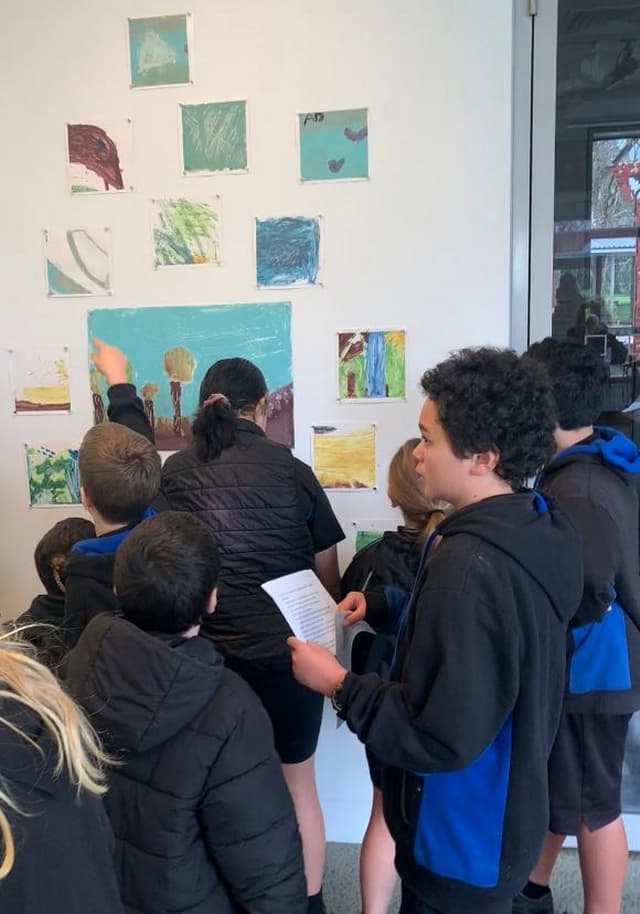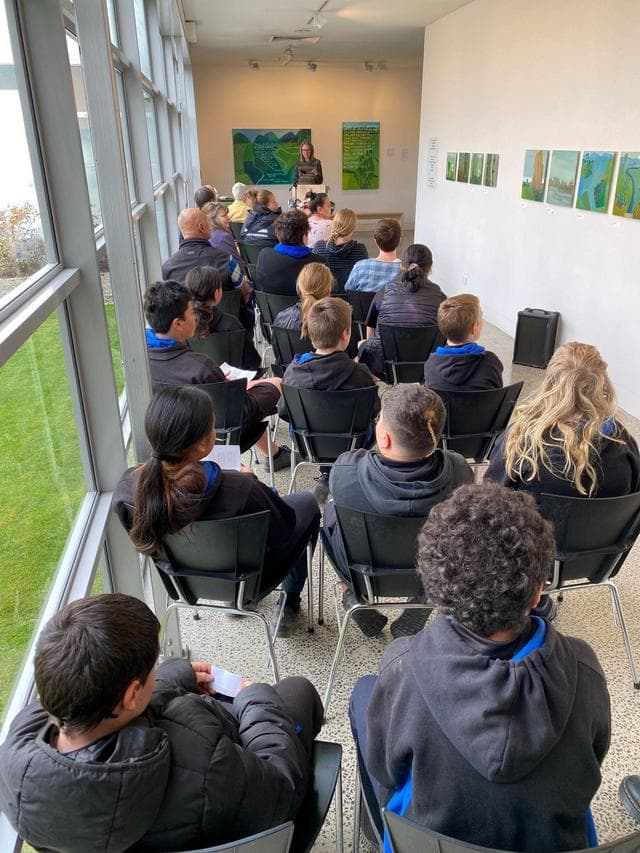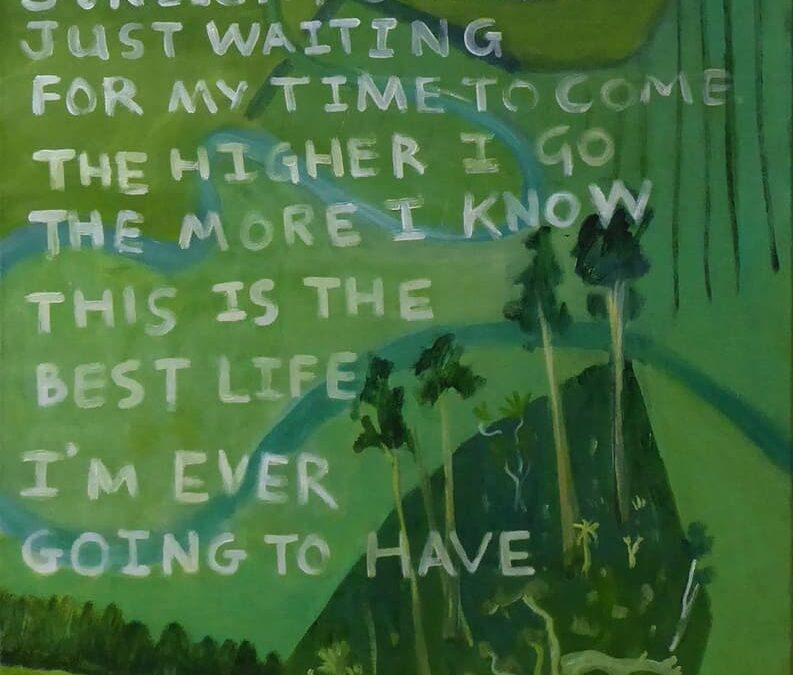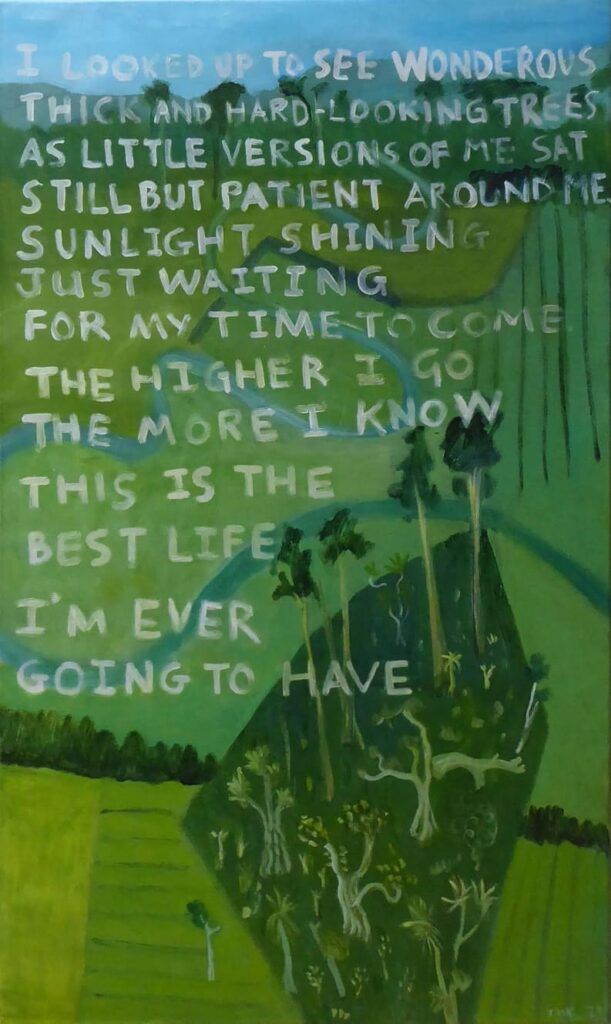
We have been seeing how the things we say and the stories we tell, when connected to the rhythms and patterns of nature can have unexpected ripples that travel far and wide. As described in the previous blog we worked with fourteen, year 6, 7 and 8 tamariki from Te Kura o Paetūmokai (Featherston School). Our journey together began in Waihenga Bush, an original podocarp forest on the edge of the Ruamāhanga River. Together we planted young saplings beneath the forest giants, in an area which had been grazed over many years. Contributing to the healthy growth of the forest, inspired imaginative writing from the tamariki, which brought to life the awesome journey of a tiny seed into a towering tree. See their writing here
As I sat silent and still, I wondered what I might become:
Slowly, I grew roots and started to sprout up through the soil. I pushed. Patient with the potential to become a towering giant, giving shade to the creatures that live in the undergrowth and homes to those who fly and soar up in the sky. I was a Totara. Tiny, but waiting forever, waiting for the time when I would grow to be as tall as my ancestors. – by Jonah
Willing hands, words and memories, travelled to our Ruamāhanga Wetland, and then on to the Hau Ariki Marae, where Jenny Keate led the tamariki in an art workshop. Along with their words, the paintings of these young artists travelled over the Remutaka hill to Jenny’s studio in Wellington. Sections of each of the paintings returned to the Wairarapa as a composition bringing a new dimension to Jenny’s Looking Sideways exhibition at Aratoi museum and gallery.
As a facilitator it has been important to keep in mind that genuine collaboration requires moving fast and also moving slow. Fast enough to catch the sparks of possibility as they arise and slow enough to let all the participants have a voice; revealing in their own way what they feel ready for and excited by. Less than a week before their visit to see their art work exhibited at Aratoi, Rod and I ran another written and spoken word workshop with the tamariki. I was nervous before we began, wondering if we were asking too much in the hour we were allocated. Fortunately I was not disappointed. Within minutes the atmosphere became charged, as memories of the different parts of the landscape we had journeyed through together bubbled to the surface and descriptive words were arranged into the 5,7,5 syllable structure of a Haiku. See the rest of the Haiku’s here.
Soft, wet, muddy, ground
Strong and luscious matai
Helping trees to grow
By Aniwa
At the end of the morning it was obvious we needed to host a proper event with invited guests, to celebrate the work of these young artists . Many hands helped to make this possible. Firstly thanks to Aratoi, for making room for adapting to our last minute plans. Thanks also to Green Jersey Cycles for providing the bus from Featherston to Masterton. Finally a big thanks to Wiremu Dawson, one of the Kaumatua from Hau Ariki Marae who helped amplify the voices of the earth. Wiremu led a karakia and supported the tamariki in performing kapa haka. In his korero he explained how one of the waiata that was sung honoured the mountains, the rivers and the sea that have shaped our valley, describing the different ways they continue to nourish and feed us.
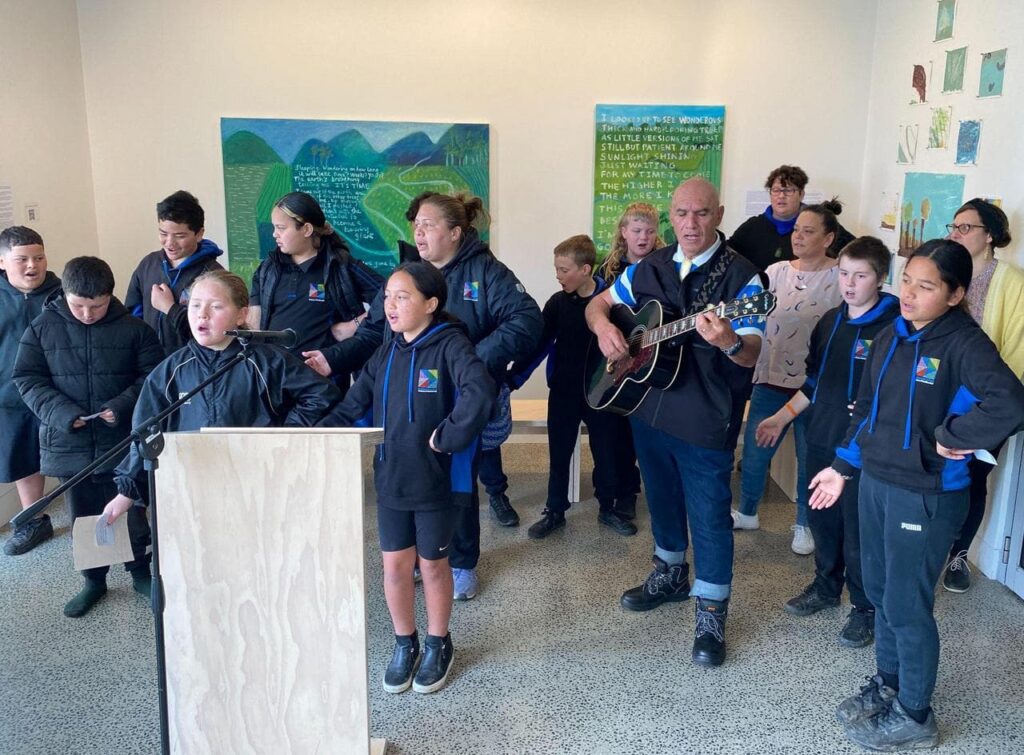
In our fast track world, it is so easy to overlook the importance of taking time to reflect. Myra Lee, one of the tamariki, thanked us for “making her memories meaningful”. I replied by explaining that young voices like hers are needed as they can inspire others. At the event Jenny spoke to the tamariki explaining how collaborating with the younger generation had changed her work as an artist from a solitary activity to a community response that served the environment.
“ Your approach in writing from the point of view of the earth and the plants and creatures that inhabit it, helped me imagine that I was a bird floating above the Waihenga bush. I tried to capture the main things – the bush surrounded by fields. The river winding alongside and the mountains behind. I haven’t put words on a painting before so this collaboration inspired me to do something new. The first painting I did only used half the words so I had one more big painting to do. I decided to add them to this painting that I’d already finished before I got the words. It had this big gap in it with lines on it as if it was waiting for the words. I put them on and I knew it was the right decision. This painting was the first one to sell. The Ruamahanga Restoration Trust, another group of people working to restore the health of the river, bought the painting. They are thinking about auctioning it to support the restoration of the forest along the river, or donating it to a public space. Either way this painting is going to keep on working and the message carried in your words will keep on spreading. The collaborative piece that I created out of your paintings was unpredictable. We didn’t know what we’d get when we began. For me It tells a story. It’s got a mountain at the top. A giant moa watching over things. It’s got wind, trees, land, sky, water, mud. As an artist it can be hard to get your message out there. Not in this case. By working together we achieved something we couldn’t have done individually. Trees grow best in the company of other trees, and ideas are like that too. So thank you for your contributions to this project – together, we’ve done something to help the trees and the river.
This is what Gill Stewart, the Wairarapa Enviroschools Community Facilitator, had to say after attending the Aratoi event with the Tamariki
“Hearing the connection that these young people had made with the natural environment, te taiao, through the words they had written and then shared proudly was heart-warming and hope restoring. It reinforced for me the importance of our mahi reconnecting people with nature to insure the wellness of the earth as well as ourselves.”
